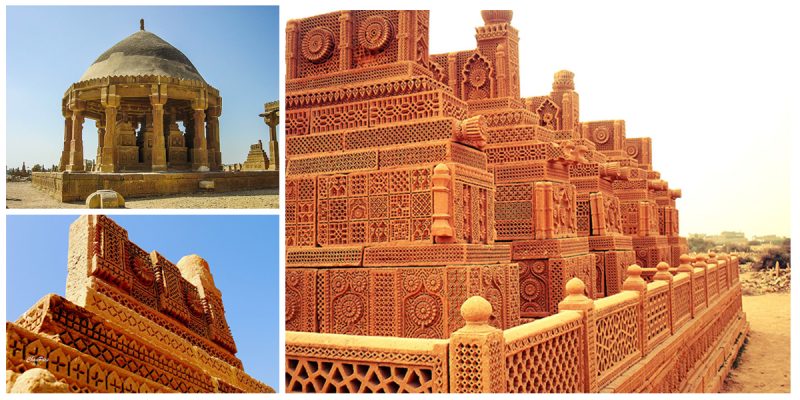Located near Landhi town on N-5 National Highway, 29 kilometers of east Karachi and spanning over an area of roughly two square miles, the Chaukhandi Tombs contain tombs of certain warriors of Saloch families settled in this area sometime during the 15th and 18th centuries A.D.
They were constructed either as single graves or as groups of up to eight graves, raised on a common platform. Some of the more elaborate graves in the cemetery are made from buff colored sandstone with carved decorations, revealing an expert level of craftsmanship in its construction.
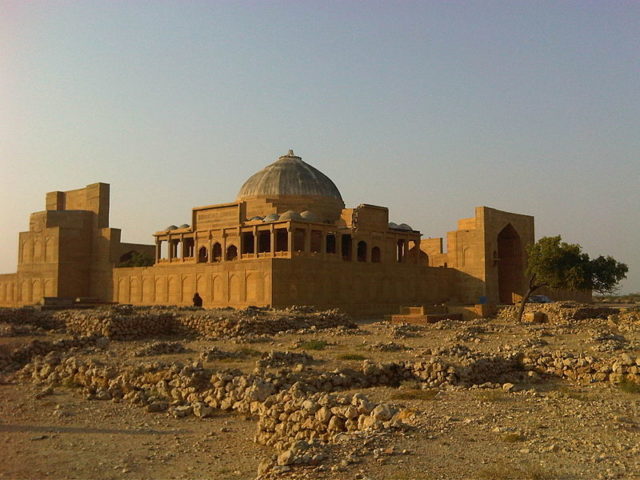
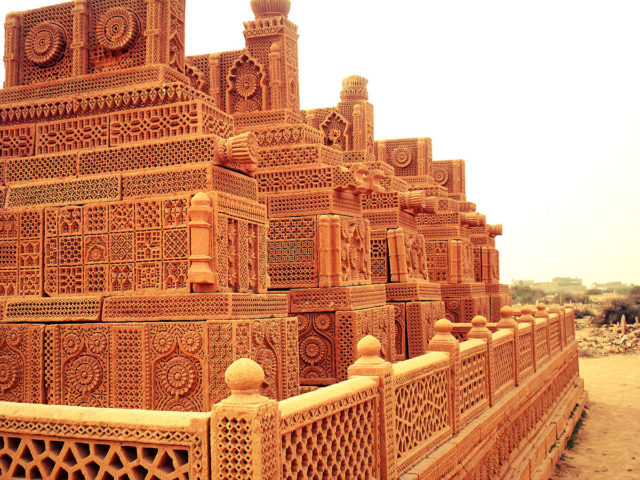
This unique architecture style can only be seen in Sindh and cannot be found anywhere else in the Islamic world.
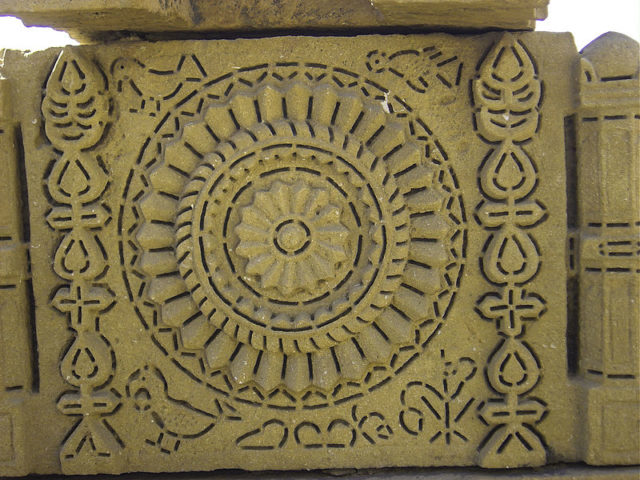


A typical sarcophagus consists six vertical slabs, with two long slabs on each side of the grave indicating the length of the body and the remaining two vertical slabs on the head and foot side.
These six vertical slabs are further covered by a second sarcophagus, but of a smaller size, giving the shape of a pyramid.
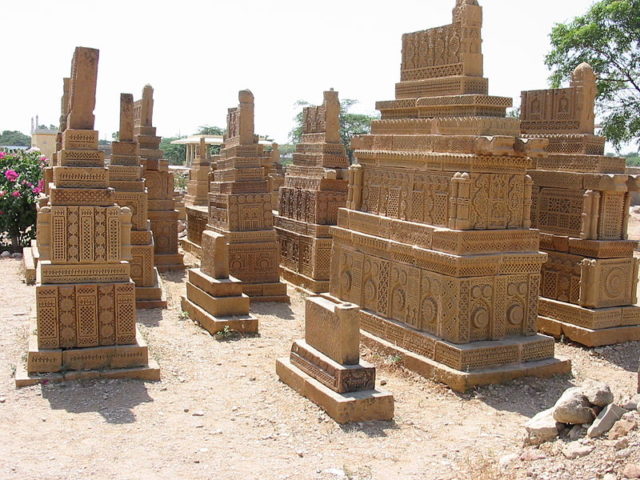
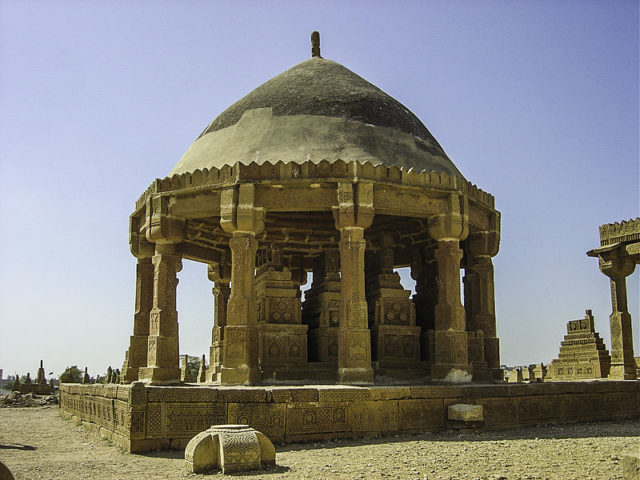
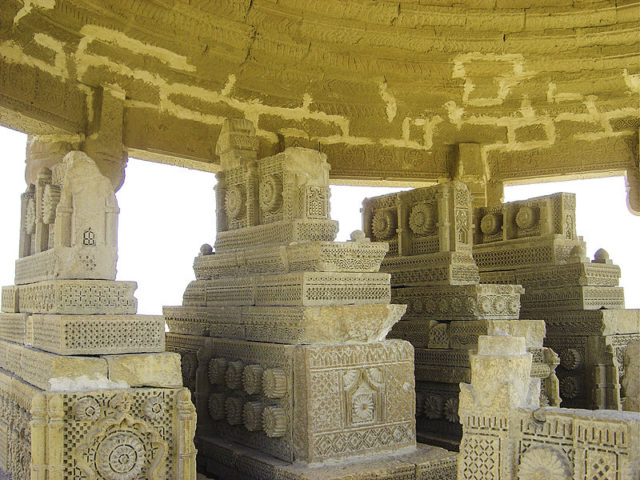
Most of the tombs represent family graveyards and only a few are placed under pillar canopies finished in Hindu style. The tombs of men are capped and stylized by a turban and occasionally carved with horses, shields, swords, bows, and arrows and most of the women’s graves have been decorated with jewelry, such as anklets, bracelets, necklaces, rings, ear-pendants etc.
The tombs are generally in a shape of a pyramid and remarkable for their elaborated, exquisite sandstone carvings depicting both geometrical and floral motifs.
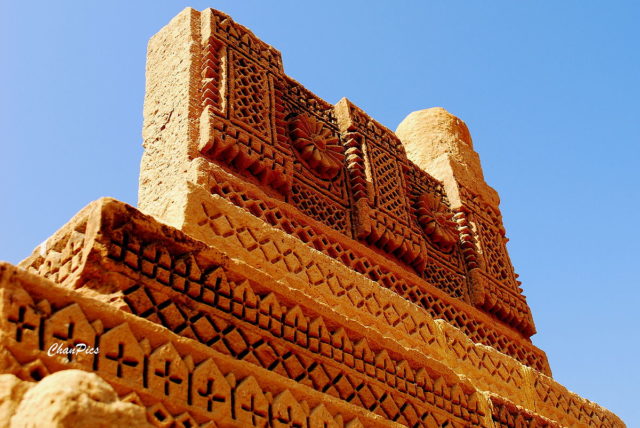
Generally, the tombs are attributed to the Jokhio (also spelled Jokhiya) and known as the family graveyard of the Jokhio tribe, although other, mainly Baluch, tribes have also been buried here.
Jokhio was a tribe that was from Samma tribe that is known as the clan of Rajput (the decedents of ruling Hindu warrior classes).
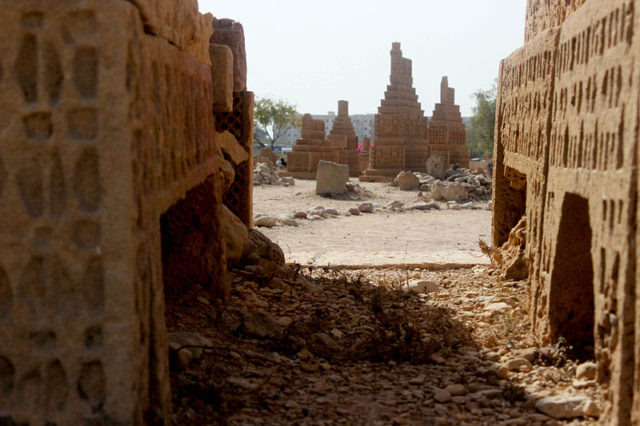
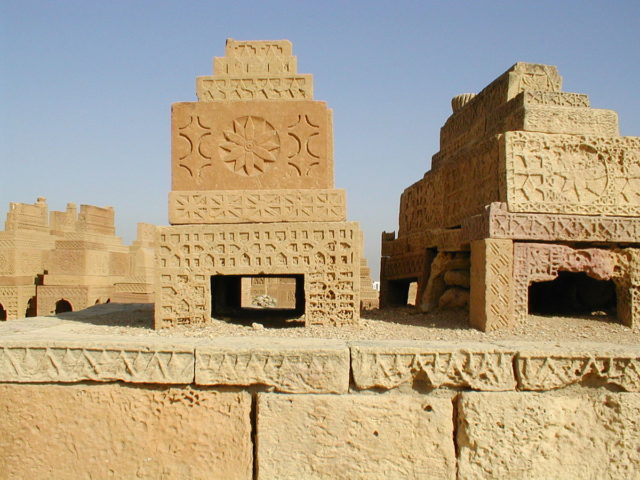
There are various opinions over the meaning and connotation of the term Chaukhandi, but it is still controversial whether it is an architectural term or a name of the place. On one tomb the word Chaukhandi is engraved. That might signify the location rather than the structural style of the monument.
It is, therefore, possible that the word Chaukhandi, originally referring to the style of construction, became associated with one particular site.
